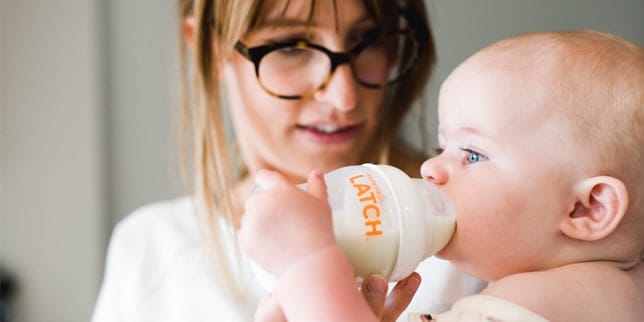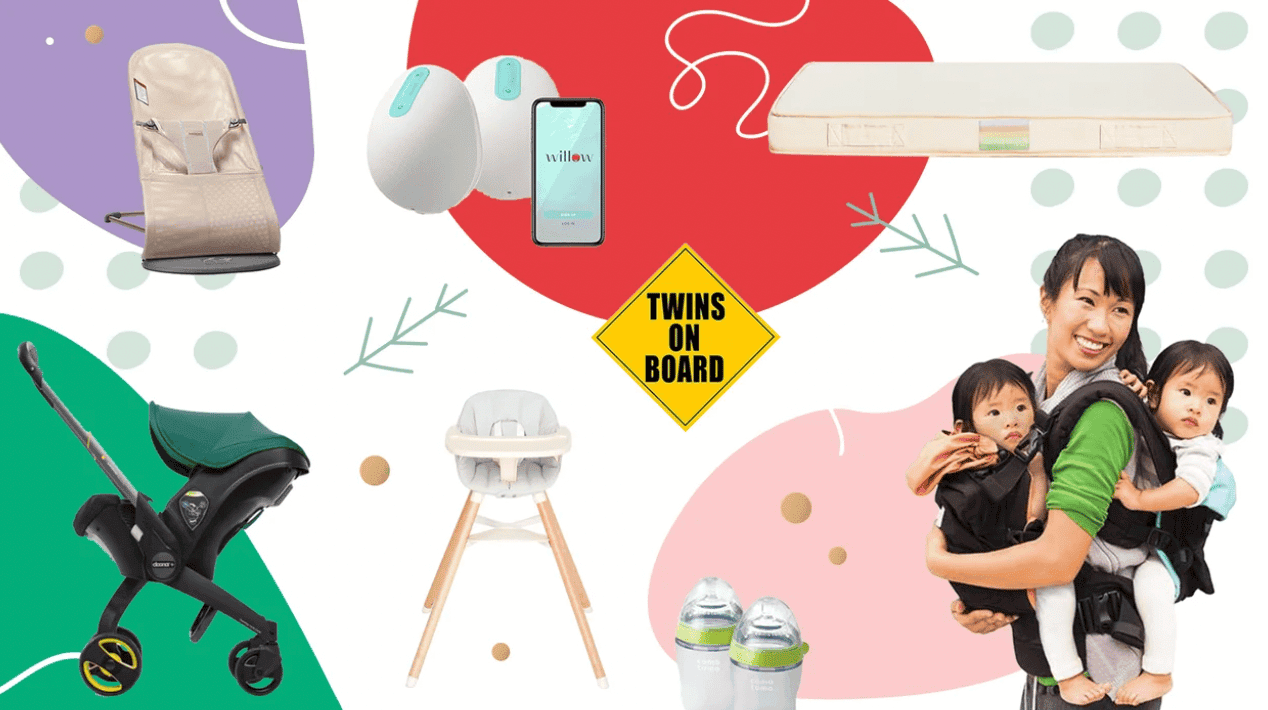10 Reasons a Breastfeeding Mom Might Want to Use a Bottle

Breastfeeding doesn’t have to be all or nothing.
*We collaborated with Munchkin to highlight their LATCH bottle , specifically designed for the breastfeeding mom, and to show that bottle feeding your breastfed baby has some benefits.
Breastfeeding doesn’t have to be all or nothing. Sure, feeding directly at the breast has many benefits – from passing on evermore antibodies to baby to fostering good oral-motor development. But nursing full time can be a lot to handle, inconvenient or simply impossible. Giving your breastfed baby a bottle, whether it’s to fuel him with a little formula or to give your breast a break, is perfectly normal, and it doesn’t have to indicate the end of your nursing days. With the right guidance and the right bottle, baby can in fact move from boob to bottle (and back) without suffering from the much-dreaded nipple confusion.
While many experts say that babies are born and wired to eat at the breast, bottle feeding is not without its advantages. Here are 10 reasons breastfeeding mamas should use the bottle to feed baby.

1. Share the responsibility (and that special bond). Getting baby used to the bottle early on will allow dad to take the lead, even for middle-of-the-night feedings, and may buy you time to shower, eat and even sleep. Feeding baby with a bottle also lets him bond with dad (and other members of the family) the way he bonds with you when he nurses.
2. Let baby #1 be a little helper. Your firstborn will need to adapt to a new baby in the house, and one way to help him adjust to his new role in the family is to make him feel involved and important. By letting your oldest child help you with feedings, you give him the opportunity to connect with baby, which in turn may make the transition a little bit easier.
3. It will make the transition to daycare much easier. If you are planning on going back to work, someone else (be it a nanny, a family member or a daycare educator) will need to feed baby. So let him practice drinking from the bottle well before he transitions to a daycare environment. Accordion-style nipples mimic the sensation that baby gets when he nurses to ease the transition from the breast to bottle.

4. You know exactly how much milk he’s getting. When nursing baby, there’s no way to gauge how much he is eating (since babies are eventually much more efficient than a pump, the amount of milk that you can pump may not be a good indicator of how much they are getting). If you are worrying about your little one’s weight or simply want to keep track of his food intake, this may be a real struggle. Bottle feeding offers peace of mind by letting you measure how much baby is consuming. With its anti-colic valve, Munchkin’s LATCH bottle is particularly great for colicky newborns.
5. Fortify your milk. The human body produces vitamin D, also known as the “sunshine vitamin,” in response to skin being exposed to sunlight. Unfortunately, babies should avoid direct sunlight until they are at least 6 months, and breast milk doesn’t pass down enough of the vitamin to make up for that loss. The AAP recommends using supplements for exclusively and partially breastfed babies, and one way to do that seamlessly is to mix vitamin D drops to your milk directly in the bottle.

6. Keep impatient babies happy. Have you noticed your little one fussing before letdowns? If so, he may be impatient for the faster and more consistent stream of milk that comes with them. With a bottle, you can provide your frustrated child the immediate gratification of milk flowing at a steady pace. Plus, as baby grows, you can adjust the flow to his liking or switch to a transitional bottle .
7. You won’t need to whip your breast out wherever you are. We’re all for normalizing breastfeeding in public — people can stare all they want, if baby is hungry, mommy is nursing. But there are certain social situations, like at a holiday party with colleagues or a brunch with friends and acquaintances, during which we’d rather keep our breasts under wraps.
8. It’s okay to supplement. We’ve heard it before: breast is best. But not all women make enough milk, and not all of them want to exclusively nurse – and that’s okay. Your baby’s health and happiness depends largely on what works for you, as a family. So if you need or want to combine breast milk and formula, your baby will be (more than) fine, and you may find yourself much more relaxed, which, in the long run, can help you nurse longer.

9. You can wear whatever you want. Nursing fashion came a long way, and there are a lot of “regular” clothes that work great with your new mama duty. But while we love button-down shirts, crossover tops and wrap dresses, finding clothes that give access to your baby-feeding boobs can feel limited at times. With the occasional on-the-go bottle, you can say hello (again) to maxi dresses with good old crew necklines and boat-neck jumpsuits. Whatever outfit you opt for, don’t forget to protect it with nursing pads . After a few hours without nursing, leakage can be unpredictable and inevitable.
10. Give yourself some “me” time. Are you yearning for a new ‘do to hide that postpartum baby hair? A massage wouldn’t be bad either now, would it? If baby can drink the bottle, mama can get some much-needed “me” time to care for herself – because a happy mama means a happy baby.


Photography by Jonica Moore for Well Rounded NY.
*We are so grateful when brands support our content and community. This post was sponsored by Munchkin .

































